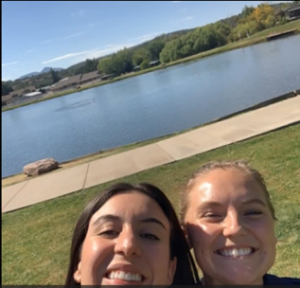In another step aimed at closing the healthcare gap in Arizona and becoming a leader in rural healthcare, NAU is expanding its Rural Health Professions Program, which will place physician assistant students into severely underserved communities throughout the state.
This remains a critically important issue, as Arizona has one of the most severe healthcare staffing shortages in the country, which is more pronounced in rural, tribal and under-resourced communities statewide. The Physician Assistant (PA) Studies Rural Health Professions Program (RHPP) is just one more way NAU is tackling this problem head-on.
“A physician assistant is a trained healthcare provider who can diagnose, order labs, interpret labs, order imaging, interpret imaging and treat patients with the right prescriptions,” said Jacob Gubler, assistant clinical professor within the Department of Physician Assistant Studies who oversees RHPP. “We’re highly trained in the medical model of learning and we help to fill gaps in healthcare.”
The physician assistant plays a vital role in filling the shortage of medical doctors who have historically been difficult to recruit to live and practice in rural areas.
Students pursuing their PA degree at NAU can apply to participate in the two-year RHPP, which exists to serve both those studying to become PAs as well as the communities in need of healthcare services. Recently, NAU’s Physician Assistant Studies Department received a $369,000 grant from the University of Arizona’s Area Health Education Centers (AHEC) Program. This new grant enables students to participate in the RHPP and AHEC Scholars programs where they take part in professional development opportunities and serve in clinical rotations at rural and underserved sites statewide. The grant supports the continuation of this important program through summer of 2024 and will fund nearly 100 students to serve 53,220 clinical hours in rural and underserved communities.

The first year of this program is the didactic year, spent entirely in the classroom with varying labs and hands-on training. It is filled with intensive studying and lectures to prepare students for their second year; this is when students begin their clinical rotations. The students work eight rotations over the course of a full year, with each rotation focusing on a distinct element of healthcare. Surgery, women’s health, mental health, emergency medicine and one elective healthcare focus each last for four weeks of the program. The eight-week primary care rotations include family medicine and internal medicine. The students are split up into groups and complete each rotation in different orders. The majority of the rotations are in primary care within medically underserved areas, in places like Payson and Douglas. The program gives local healthcare providers additional hands that can support patients, while the students studying to become physician assistants receive meaningful hands-on learning opportunities.
Importantly, the program also aims to inspire students to serve in similar rural or underserved areas after graduation.
“I’m from Tubac—a small Arizona town which few people have heard of, so I kind of knew what growing up rural was like,” said PA student Katie Maynard, who is in her second year. Her first rotation was focused on family medicine and took place in Douglas. “It doesn’t get much more rural than that. The nearest specialty healthcare is two hours away in Tucson.”
Working in family medicine in a place as rural as Douglas, students need to be ready for anything from dermatology to cardiology.
During her rotation in Payson, another PA student, Jami Smith, facilitated several roundtable discussions with locals on how to improve the community.
“Some who participated grew up there and have lived there their entire lives. They would share stories about their healthcare experiences, and it was heart-wrenching,” Smith said. “It meant a lot to get us all into a room and really conversate about what can be done to address these shortages.”
When Gubler was in school, he worked the entirety of his clinical practice with Gila River Healthcare in Sacaton, Arizona. For him, treating underserved communities is an extremely important element of healthcare, and he is proud to be part of inspiring future PAs to serve similar communities.
“The PA RHPP is such an awesome experience for students. It’s so important for the state to have students who are willing to train in and learn to provide care in these areas. I think it’s just going to be a great benefit the longer we do this,” he said. “Thanks to this grant, our future generation of physician assistants can learn to provide care in places that are in desperate need of consistent healthcare providers.”
Learn more about NAU’s Department of Physician Assistant Studies.
Julius Happonen | College of Health and Human Services




